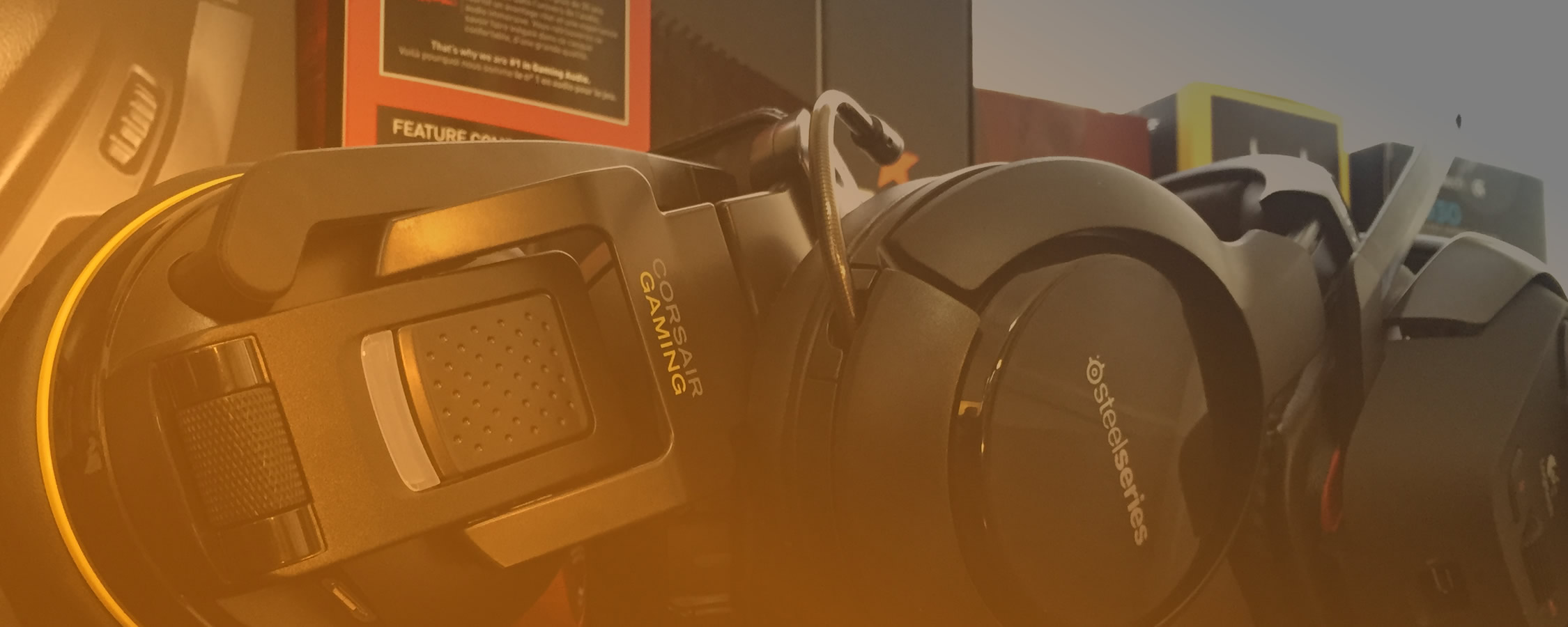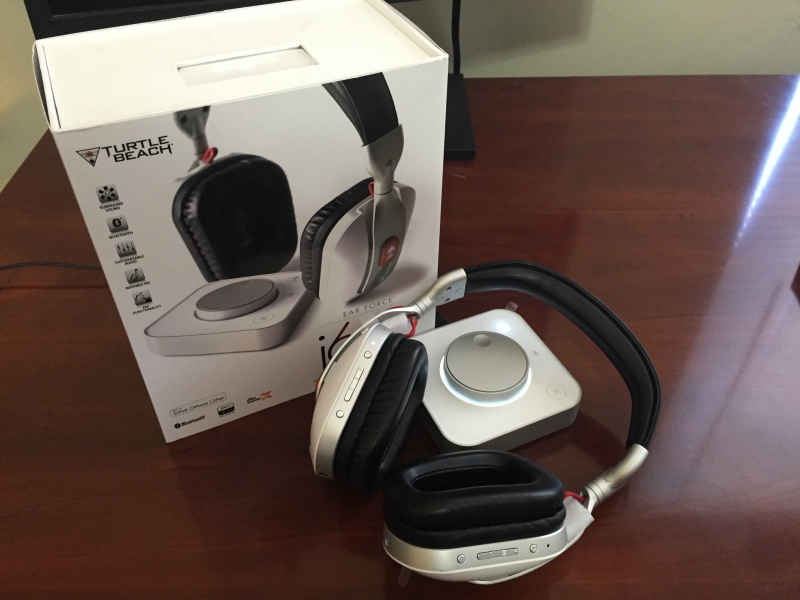Turtle Beach i60
score
The Turtle Beach i60 boasts a sturdy boom-free design, dual-band wireless and works with your Bluetooth device, however the internal microphone will have you sounding like a frakkin' cylon while its poor wireless range will confine you to your quarters.
Comfort
I'm convinced Turtle Beach hires aliens for its engineering and design team. Although technically large enough to house my ears, the ear cups are strangely long and narrow. I had to fold the ends of my ears in to get them to fit. The leatherette cushions aren't particularly soft, but also happen to be pretty shallow – only the Z300 was more shallow than these. Shallow ear cups can make for sore ears after long sessions, but thankfully these were simply more awkward than painful.
Sound
Originally a $300 headset, now discounted to $205, put the i60 in the same bracket as the Astro A50 and SteelSeries H Wireless. Acoustically though, Turtle Beach's premium entry doesn't uphold the same standard. Armed with 50mm drivers (40mm is used by both Astro and SteelSeries), I expected big sound from the i60. Although richly detailed and clear, the absence of low-end notes was a surprising disappointment. I tried all of the available EQ modes including "bass boost" and the results were underwhelming. Since the i60 is USB only, there was no way to tweak audio outside the 8 predefined EQ profiles programmed into the headset. Generally, the mids were really up front and the low frequencies hardly noticeable, particularly at lower volumes.
First time i60 users should note that "media" mode should be active when better, fuller sound is desired. "Headset" mode is designed for chatting on your smartphone where media mode is intended for music, movies and gaming. There are also eight EQ presets. Bass boost was my go-to though, as other profiles were anemic for gaming and music.
Wireless
The i60 tied with the Logitech G930 for having the highest latency of any headset. The round trip delay from mic to ears is roughly one-third a second (versus one-tenth of a second from Astro and SteelSeries). Pro gamers may care, but most prospective owners probably wouldn't notice.
The i60 offers "interference free" dual-band wireless. Indeed, it never dropped during gameplay nor did it succumb to intentionally produced interference. Its poor RF range though will have you confined to the same room as the transmitter. The i60 and Z300 tied for the poorest wall penetration of any headset here. Any time I stepped outside the room and turned the corner, the connection began breaking up. The i60 and Z300 were the only headsets which could not be used reliably in an adjacent room.
Microphone
In short, the Ear Force i60 produces microphone input comparable to most speakerphones and Bluetooth earpieces. Overall, the voice quality is passable for phone or VoIP applications, but generally falls short of its boom-equipped competition. It can sound quite unnatural and even robotic at times.
Ditching the boom for added sleekness, the i60 is equipped with two pinhole microphones in opposing locations: one monitors ambient noise and the other listens for voice input. The resulting noise suppression is actually adept at filtering subtle noises like computer fans. However, it was far less capable when it came to distinct nearby sounds like footsteps, crinkling packages and children playing outside. There's a mute button and more curiously voice morphing on the headset itself.
Features and Value
What the i60 brings are its unique boomless design and unusual addition of a secondary radio for Bluetooth. You may also dig the slightly lighter weight, all-white look of the i60. On the headset, there are controls for volume, 8 EQ presets, mic mute, a dizzying array of Bluetooth functions and even voice morphing.
With no analog or optical inputs found on the transmitter, connectivity is essentially limited to USB and Bluetooth only. Of course, Bluetooth is filled with possibilities: smartphones, tablets, music players and more. The i60 and Z300 were the only headsets to include a Bluetooth radio. I loved being able to use the i60 for phone calls, even taking them while gaming simultaneously. The i60 worked well for calls around the house, better than my Jawbone, actually. It also was much better to use than the Z300 for phone calls. Controls for handling calls and music are on the headset itself. Actions like "tap tap" for this and "press 3 times" for that will have you referencing the manual quite a bit until you get acclimated. Also like the Z300, the i60 also allows for multiple Bluetooth devices simultaneously.
The transmitter itself offers a few basic features, namely mute, volume and surround. Most things are controlled by a giant wheel which looks and feels nice to use. Lighted indicators hint at what is enabled or disabled but you'll at least want to glance at the manual to understand it fully.
Battery Life
Using dual-band and disabling Bluetooth, I recorded about 6 hours of activity with roughly 30 percent battery left. It seems owners should expect roughly 10 or more hours of battery life, but significantly less with Bluetooth simultaneously enabled.
The reason for this approximation was synthetic test failure – the i60 kept powering down despite continuously playing music through the media headset and music being pumped into the microphone. Interestingly, the headset never powered down while actually listening to music or gaming though. Why? Well, I don't know. After powering down a few dozen times over the course of a few days, I decided to combine all active times together for an approximate "on" time of a 6 hours. There isn't a battery indicator on the headset or software, but I was able to retrieve 30% battery life from my smartphone via Bluetooth. Thus, 10 or more hours seems likely.
Overall Quality and Impressions
Although Turtle Beach's website claims explicitly, "Works with: PC Android," the i60's instructions and materials heavily cater to Apple Mac and iOS users. This is not surprising given its name and design. Don't be scared though: the i60 definitely works fine with Windows 8 and the iPhone.
Build quality is solid and high-end. The box it shipped in was also very nice with a magnetic flap and very similar to the Z300. This is the lightest headset here (roughly 10% lighter than the closest headsets) and certainly the most iFashionable – Turtle Beach borrows heavily from Apple's "white is the new black" handbook.
The i60 uses voice notifications to inform the wearer of settings changes. The perky female voiceovers are rather annoying and wordy. If you think the i60 is bad though, the Z300 takes this annoyance to the next level, sounding absurd and near inhuman. Simple tones would have been great here instead of having every single option read back to me in painful, verbatim detail.



